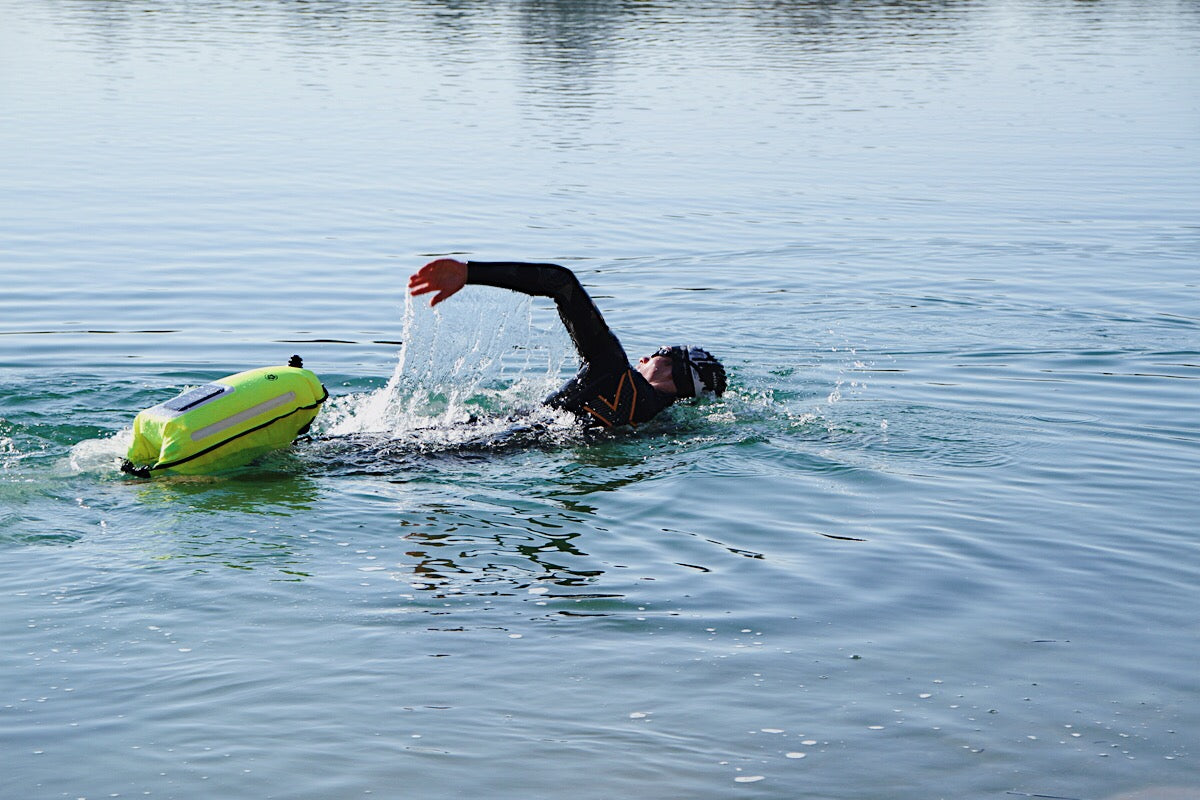Try different, not harder. This motto is the key phrase for good technique training. In order to improve, one must dare to change movements and try new things. Even if it seems difficult at the beginning - fortunately, this makes a lot of things much easier in the end, especially with freestyle swimming. That's why we dare to make changes today. We reveal what the "Alexander technique" is and how it makes you faster.
Herr Alexander, more precisely Frederick Matthias Alexander, was not a sportsman but an actor. Also, don't be surprised if you still don't know the gentleman, because he lived in the 19th century.
What do we mean by that in an article about swimming technique, you ask? Well, as far as we know, Mr. Alexander was not known for his outstanding swimming performance, but he worked and researched in areas that play a key role in swimming: breathing, as well as movement and movement control!
Recognize habits, analyze mistakes and change them
For Frederick Alexander, all of a person's mental, emotional and physical processes were interconnected. This means nothing other than that people develop habits and patterns that feel right thanks to the habit, but are sometimes not beneficial.
It is therefore necessary to question daily processes, routines or movement sequences and to decide whether they are actually "right" or whether they are only performed out of habit. If you find patterns that seem in need of improvement, you can change them.
Think directions, follow directions
First of all, it is important to consciously analyze the external or internal stimulus that motivates you to act. Then to suppress this and consciously formulate a new instruction. An instruction represents the thoughts that describe a new movement and then let us carry it out. New and completely unknown movement sequences can be practiced in this way. Important: A new movement begins in the mind.
Head, neck and torso as central elements
Mr. Alexander saw the head, neck and torso as central elements that had to be controlled and harmonized. Especially when swimming, these elements also play a major role. Because the head balances at the end of the cervical spine, which is the mobile connection between the head and the rest of the back. The more relaxed we can let our head be, the less tense our neck muscles are, the freer the most flexible part of our back remains and the easier all movements become. In addition, the head position controls our body in the water.
Break the force of habit
It's easy. Try to push off and slide in the water (this works very well in the children's pool). Enjoy the glide. Try to get as far as possible with a push-off. Repeat the exercise with your eyes closed and observe yourself. Does anything change? What happens with different head/arm positions? Your gaze is always directed towards the bottom of the pool - and suddenly floating is very easy.
Feel good and push boundaries
The aim of the exercise is to feel as comfortable as possible while doing it. If that works, the legs can also be used. Now comes the challenge. We start on our stomachs, float, come to the surface and do some leg kicks. Now initiate a 90° turn with half an arm pull and lay the whole body on the side, the legs can continue to work.
In this position, kicking to the side, you should be able to breathe easily. The arm close to the ground is stretched out, the arm above lies loosely on the side of the body. The challenge is not to lift your head, but to look nicely parallel along the surface of the water, to relax and be comfortable.
And how do you breathe?
We don't change our position in the water, rather we simply turn our heads along the body axis in the direction of our shoulders. If you lift your head, you will quickly notice that your whole body is sinking. If you put your head back on your long arm, the situation relaxes and the position in the water becomes pleasant again. Don't worry, this move is one of the hardest in swimming, but once you can do it, the rest is easy. It is therefore worth investing some time here.
A small hint
You can also start this exercise from the supine position, then you have already inhaled well and can slowly turn as far as is comfortable. If that works well, try the same exercise from the prone position. Short fins can help because they give the body a higher ground speed. This improves overall position in the water and makes the exercise easier.
For normal crawl swimming, this exercise not only helps us in terms of (self) security and rotation, but also in terms of an effective breathing technique because it requires little movement. Coming back to Mr. Alexander, it helps to remember to keep your swim cap in the water while breathing. Because only then will the water position remain stable and the speed unchecked.
Training tip of the week
Swim 200 to 500 meters easily, preferably in the chest and back
Push and slide 10 times, look at the floor, close your eyes
10 x 2 lanes (one lane leg kick in side position, one lane front crawl and then switch sides)
5 x 200 meter crawl to apply what you have learned
Find the right swimming goggles
Here you will find a huge selection of swimming goggles for indoor and open water.




















